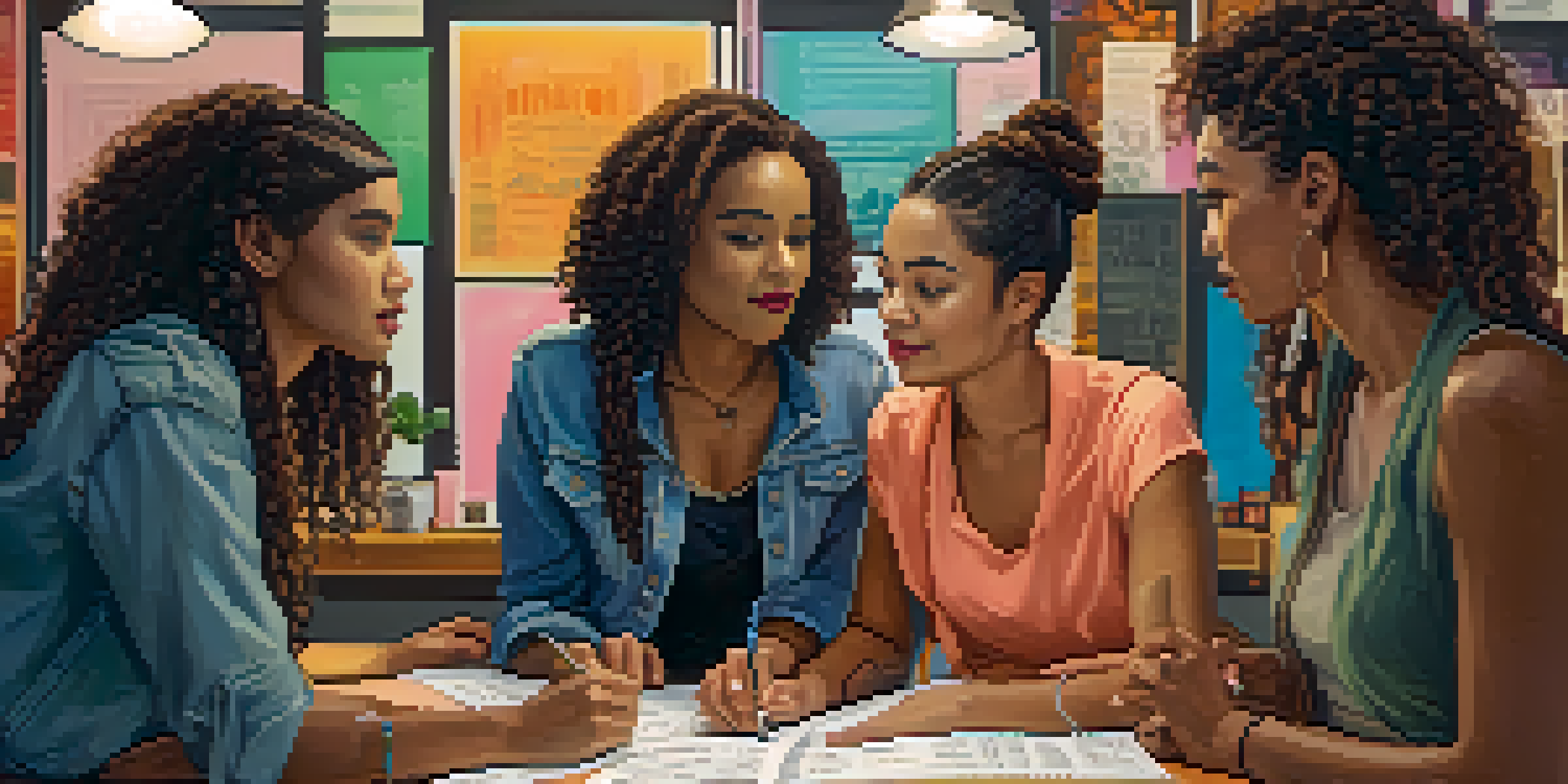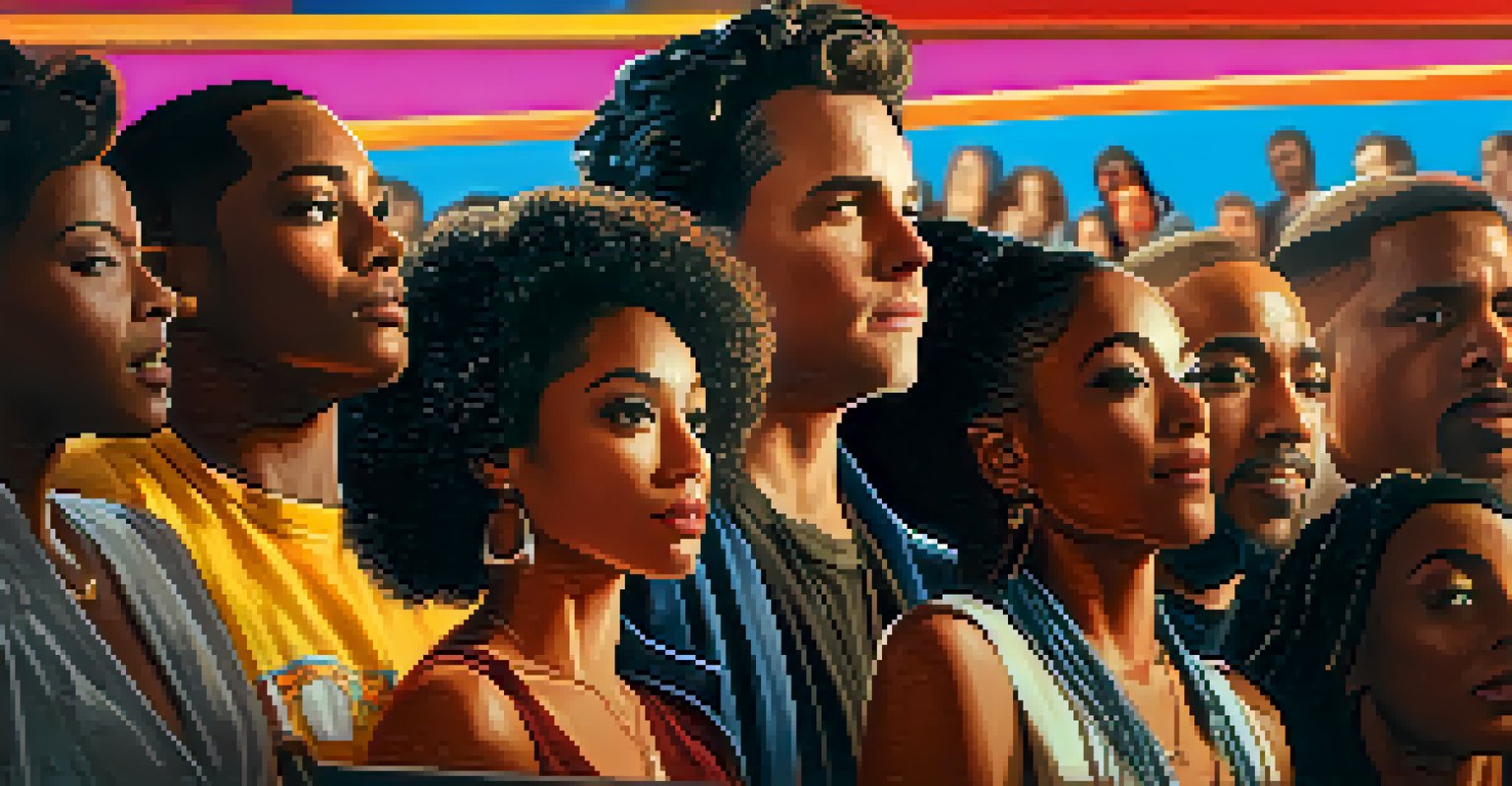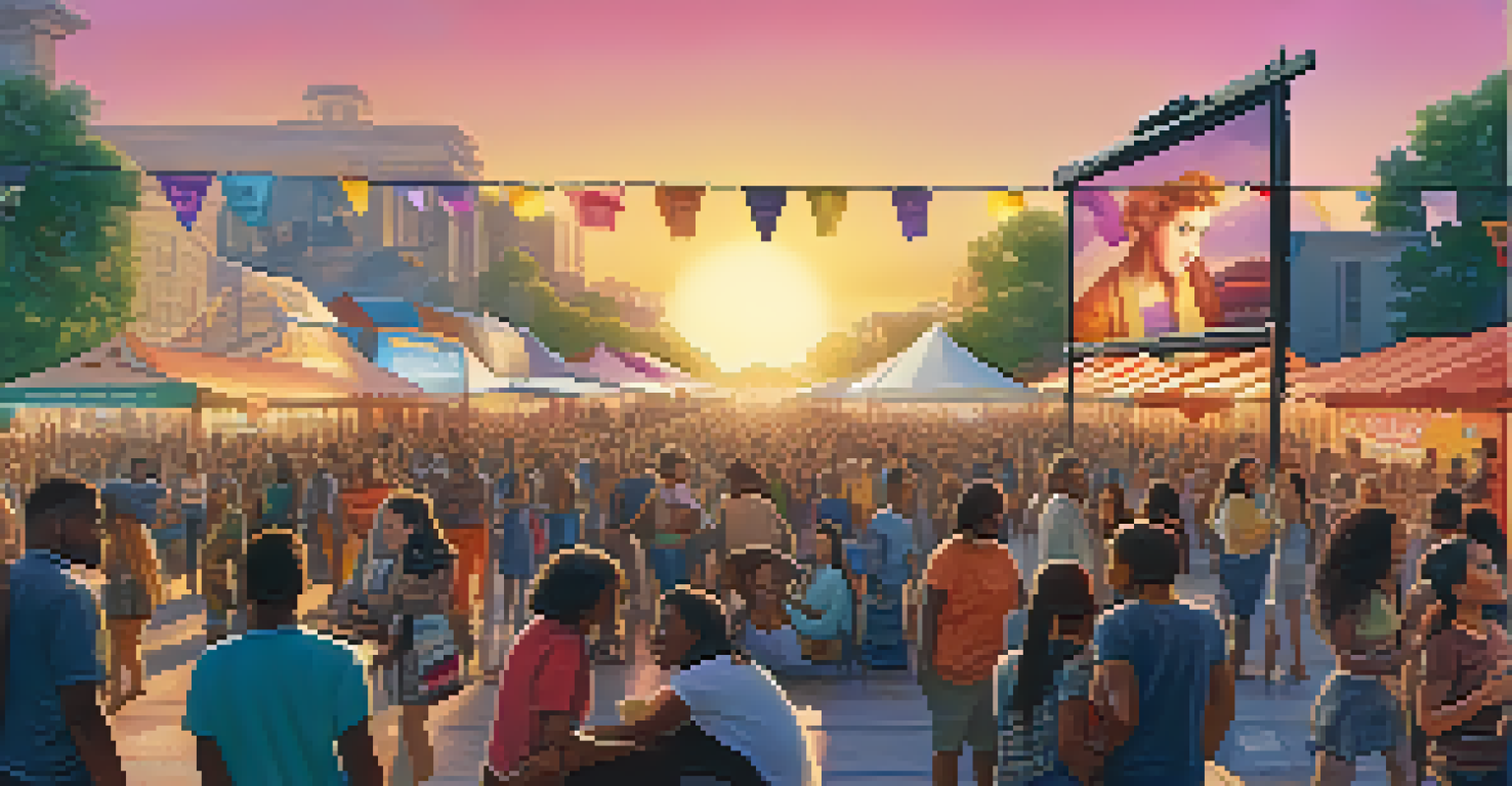The Intersection of Race and Gender in Modern Cinema

Understanding the Basics of Race and Gender in Film
To grasp the intersection of race and gender in cinema, we first need to understand these concepts individually. Race refers to groups of people who share physical traits, while gender encompasses the roles, behaviors, and identities that society associates with being male or female. Both categories have long been used to define characters and narratives in film, shaping how stories are told and who gets to tell them.
The media doesn't just reflect our culture, it shapes our culture. It creates the world we live in and the stories we tell.
Historically, cinema has often reinforced stereotypes associated with race and gender, leading to one-dimensional portrayals. For instance, women of color have frequently been depicted in limited roles, such as the 'exotic other' or the 'strong black woman,' which can obscure their full humanity. This not only harms representation but also restricts the types of stories that are told and the audiences that feel seen.
As we explore modern cinema, we find that the conversation around these issues is evolving. Filmmakers are increasingly aware of the need for more nuanced portrayals that reflect the diversity of experiences related to race and gender. This shift is crucial for audiences who crave authenticity and representation in the stories they consume.
The Rise of Intersectionality in Film Narratives
Intersectionality, a term coined by scholar Kimberlé Crenshaw, refers to how different aspects of a person’s identity—such as race, gender, and class—interact and overlap. In cinema, this concept is gaining traction as filmmakers strive to present characters and stories that reflect the complexities of real life. By embracing intersectionality, filmmakers can create richer narratives that resonate with a wider audience.

For example, films like 'Black Panther' and 'Crazy Rich Asians' showcase characters who navigate their identities as both racial and gendered beings. These stories not only entertain but also challenge societal norms by presenting diverse perspectives. They highlight the importance of recognizing that experiences of race and gender are not isolated but intertwined.
Authenticity Matters in Film
Today's audiences demand genuine representation of diverse identities in cinema.
This shift toward intersectional storytelling is vital in contemporary cinema. It encourages a deeper understanding and appreciation of the varied experiences within marginalized communities. As audiences engage with these narratives, they become more empathetic and informed, ultimately pushing the industry toward greater inclusivity.
Challenges in Portraying Diverse Characters
While the movement towards better representation in film is promising, challenges still persist. There is often pressure on writers and directors to deliver authentic portrayals while navigating cultural sensitivities. This can lead to missteps if filmmakers lack personal experience or a deep understanding of the communities they aim to represent.
We need to see more stories that reflect the diversity of our society, and that includes voices that have been historically marginalized.
For instance, the backlash against films that feature white actors in roles originally intended for characters of color highlights the importance of authenticity. This not only robs actors of color of opportunities but also perpetuates harmful stereotypes and narratives. Audiences are increasingly calling for a more accurate representation that honors the realities of diverse experiences.
Moreover, the industry can sometimes prioritize commercial viability over authenticity. This can result in tokenism, where a character is included solely to fulfill diversity quotas rather than being a fully fleshed-out individual. Addressing these challenges requires ongoing dialogue and collaboration with underrepresented communities to ensure that stories are told with respect and integrity.
Female Filmmakers Leading the Charge for Change
In recent years, female filmmakers of various backgrounds have emerged as powerful voices advocating for change in the industry. Directors like Ava DuVernay and Greta Gerwig are not just telling stories; they are reshaping the narrative landscape by prioritizing diverse experiences. Their work demonstrates how women can bring unique perspectives that challenge traditional norms.
Ava DuVernay’s 'Selma' and Greta Gerwig’s 'Lady Bird' are prime examples of films that highlight the intersection of race and gender. These films not only achieve critical success but also resonate with audiences on a personal level, showcasing the importance of storytelling from different lenses. By placing women at the forefront, these filmmakers are expanding the types of narratives that are valued in cinema.
Intersectionality Enriches Narratives
Filmmakers are increasingly embracing intersectionality to create more complex and relatable characters.
The impact of female filmmakers extends beyond individual films; they are inspiring a new generation of storytellers. As more women enter the industry, the potential for diverse and intersectional narratives grows, paving the way for a richer cinematic landscape that reflects our complex world.
Audiences Demand Authentic Representation
Today's audiences are more vocal than ever about their desire for authentic representation in film. Social media platforms provide a space for fans to express their opinions and hold filmmakers accountable for their portrayals of race and gender. This shift in audience expectations is reshaping how stories are crafted and who gets to tell them.
Viewers are increasingly supporting films that reflect their own experiences and challenge stereotypes. This demand has led to a surge in projects that prioritize diversity both in front of and behind the camera. Productions that embrace this ethos often find success, indicating that representation is not just a moral imperative but also a smart business strategy.
As audiences continue to advocate for authenticity, they are influencing the industry's trajectory. The call for diverse stories is not just a trend; it's a movement that is reshaping the fabric of modern cinema. This evolution underscores the importance of listening to viewers, as their voices can drive change and foster a more inclusive environment.
The Role of Streaming Services in Shaping Narratives
Streaming services have revolutionized how we consume media and have also played a significant role in promoting diverse narratives. Platforms like Netflix and Hulu are investing in original content that features underrepresented voices, providing a broader range of stories that reflect the complexities of race and gender. This shift has opened doors for filmmakers who may not have found opportunities in traditional movie studios.
For example, series like 'Orange Is the New Black' and 'The Queen's Gambit' feature diverse casts and compelling storylines that challenge conventional norms. By prioritizing diverse narratives, streaming platforms are not just providing entertainment; they are fostering conversations about important social issues. This accessibility allows for a wider audience to engage with stories that may have previously been sidelined.
Female Filmmakers Drive Change
Women directors are reshaping the narrative landscape by prioritizing diverse experiences in their storytelling.
However, while the rise of streaming services is promising, it also raises questions about the sustainability of diverse storytelling. As these platforms compete for viewership, there is a risk that authentic narratives could be compromised in favor of more commercially viable options. The challenge lies in maintaining a commitment to diversity while navigating the pressures of the entertainment industry.
Looking Ahead: The Future of Race and Gender in Cinema
As we look to the future, the intersection of race and gender in cinema is likely to evolve even further. With ongoing discussions about representation and inclusivity, we can expect more filmmakers to embrace diverse narratives that reflect the realities of contemporary society. This momentum is crucial for creating a film landscape that honors the richness of human experience.
Emerging technologies, such as virtual reality and interactive storytelling, also present new opportunities for exploring race and gender dynamics. These mediums allow for immersive experiences that can foster empathy and understanding among viewers. By pushing the boundaries of traditional storytelling, filmmakers can engage audiences in transformative ways.

Ultimately, the future of cinema lies in collaboration and dialogue. By continuing to elevate marginalized voices and prioritize authentic representation, the industry can create a space where all stories are valued. As audiences demand greater inclusivity, the potential for impactful storytelling will only grow, shaping a new era of cinema that reflects the world we live in.